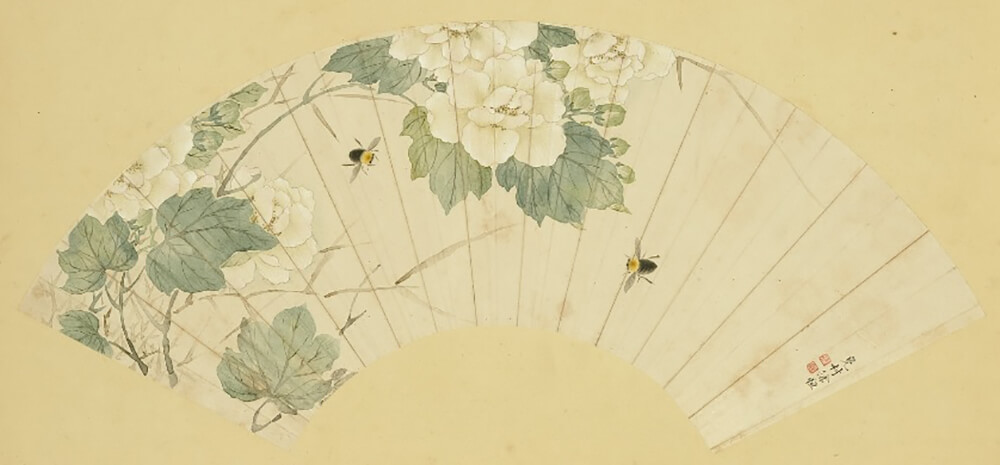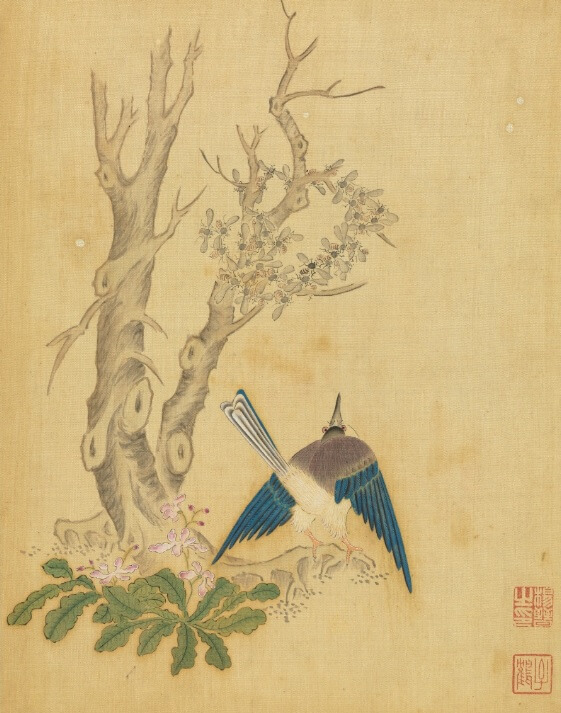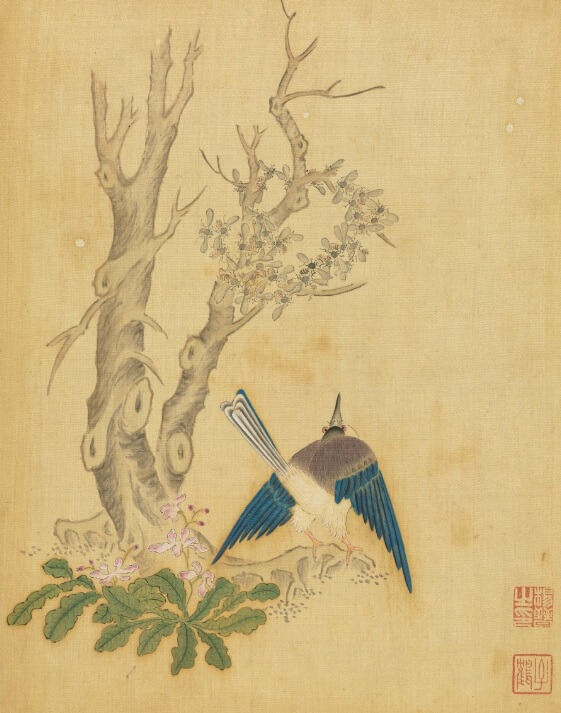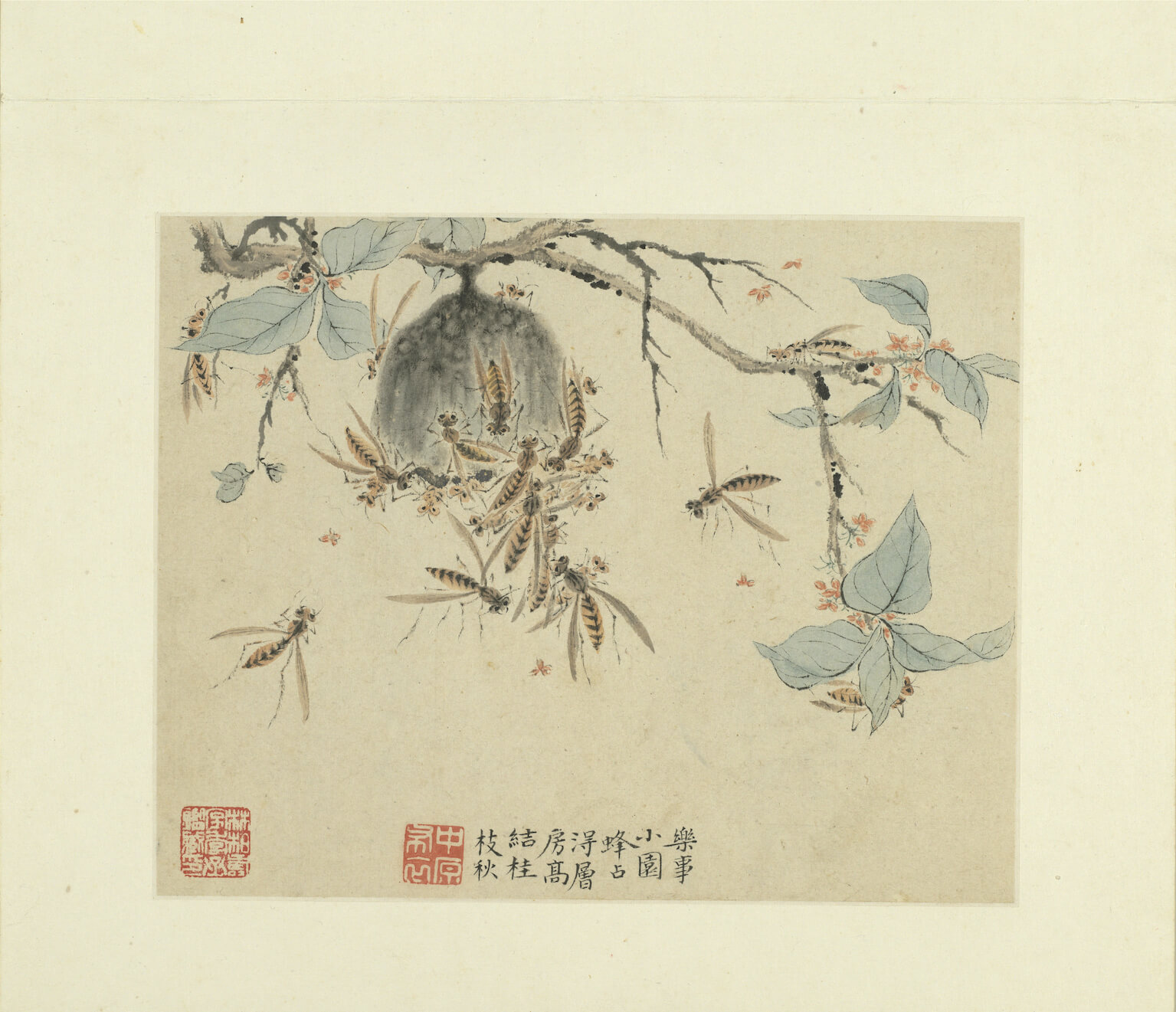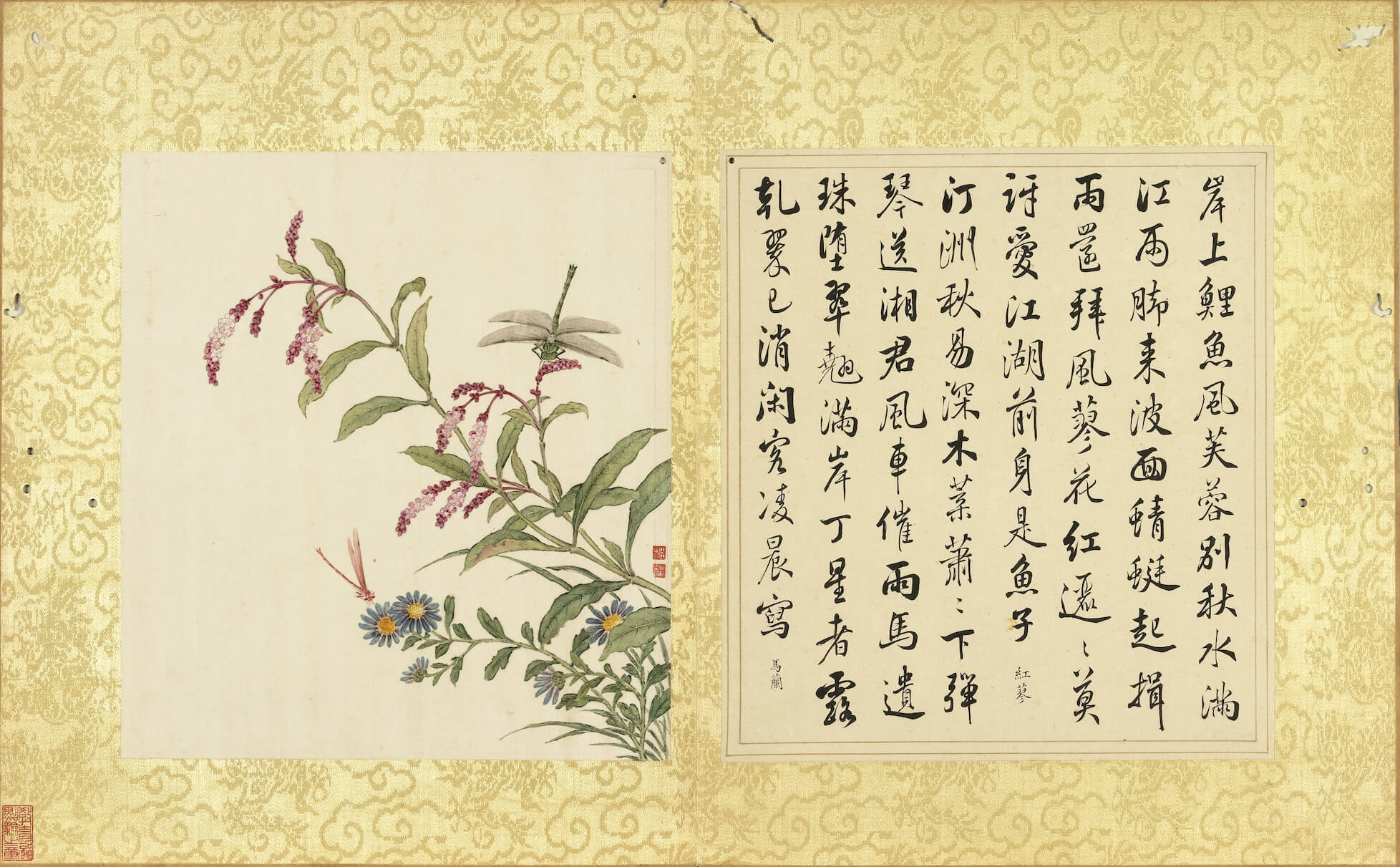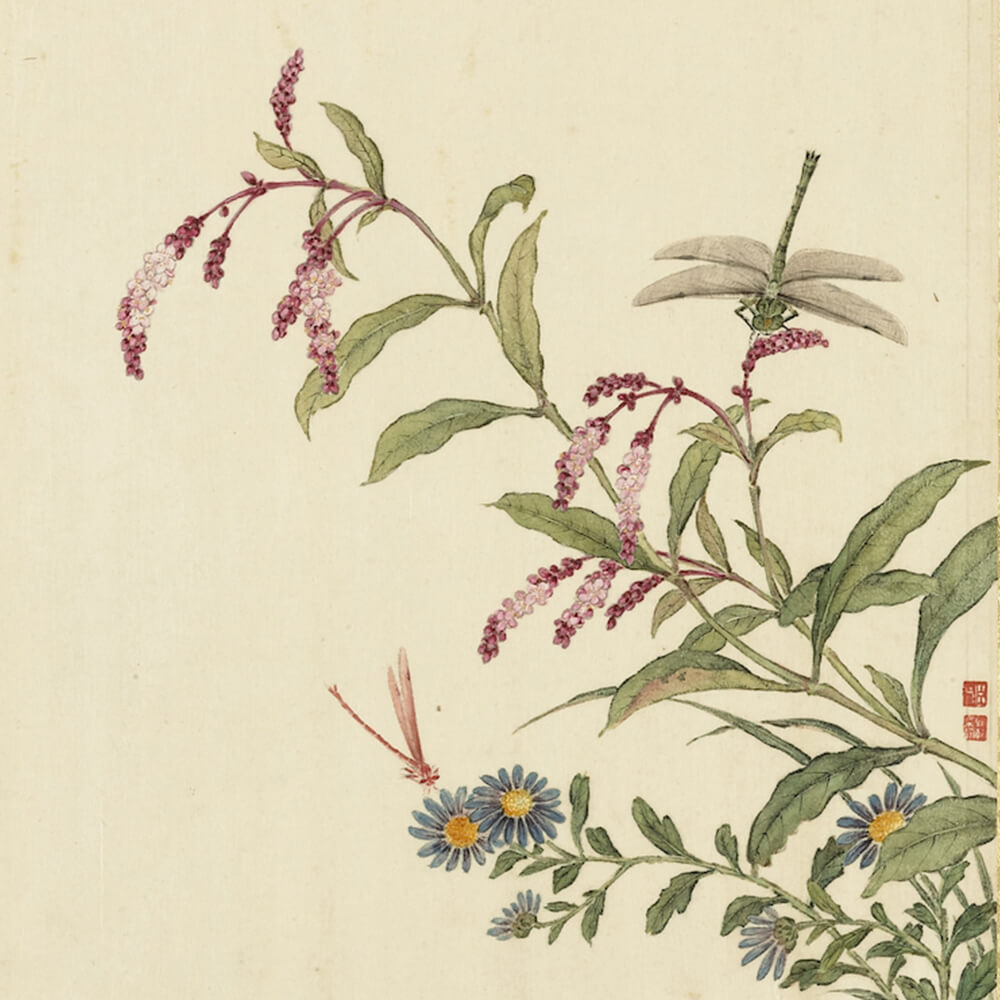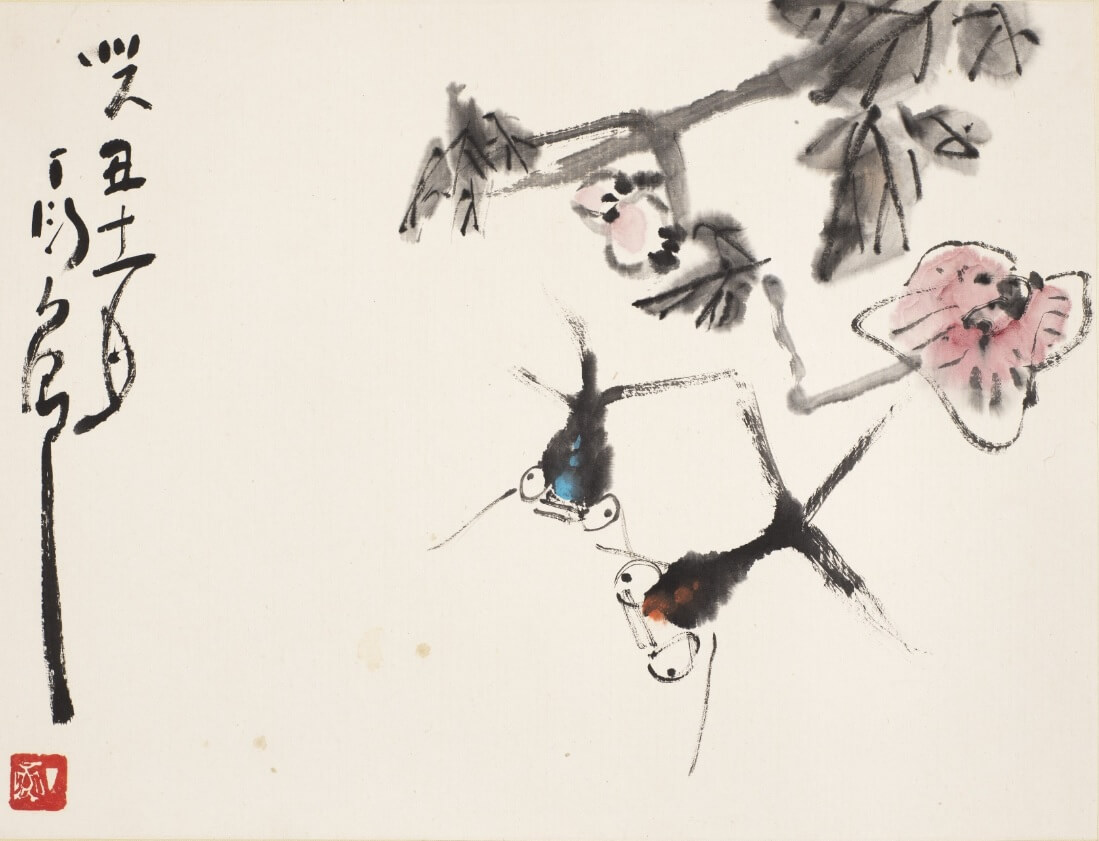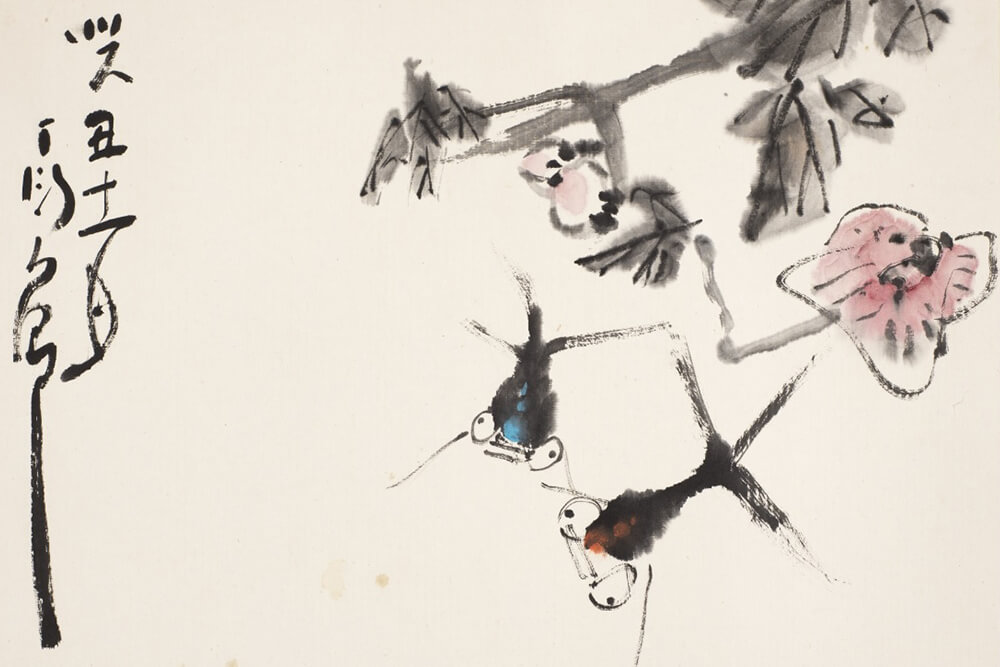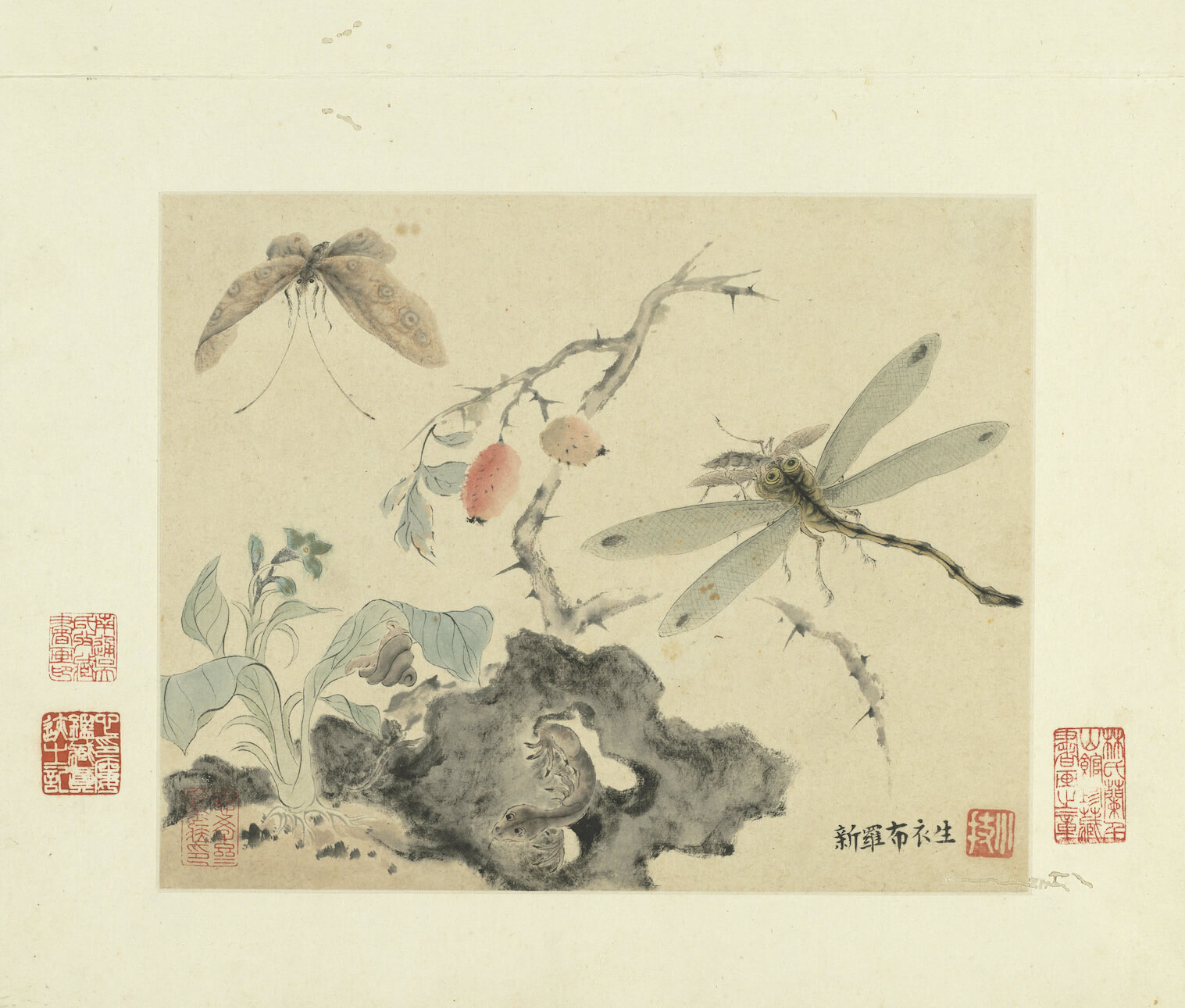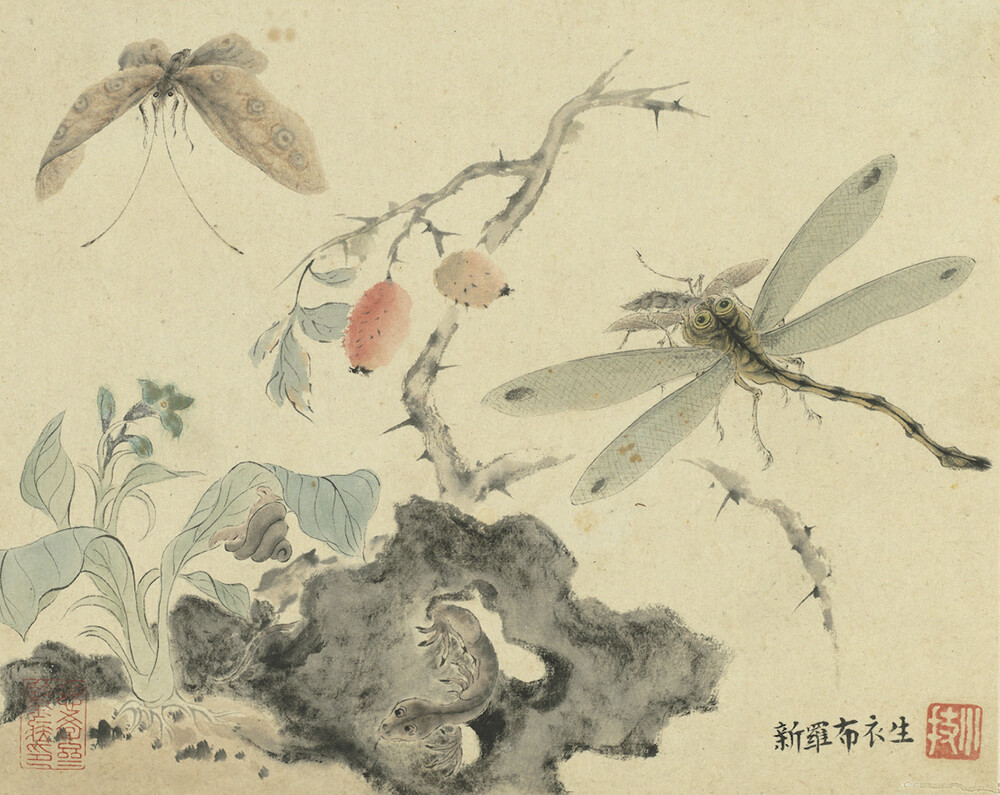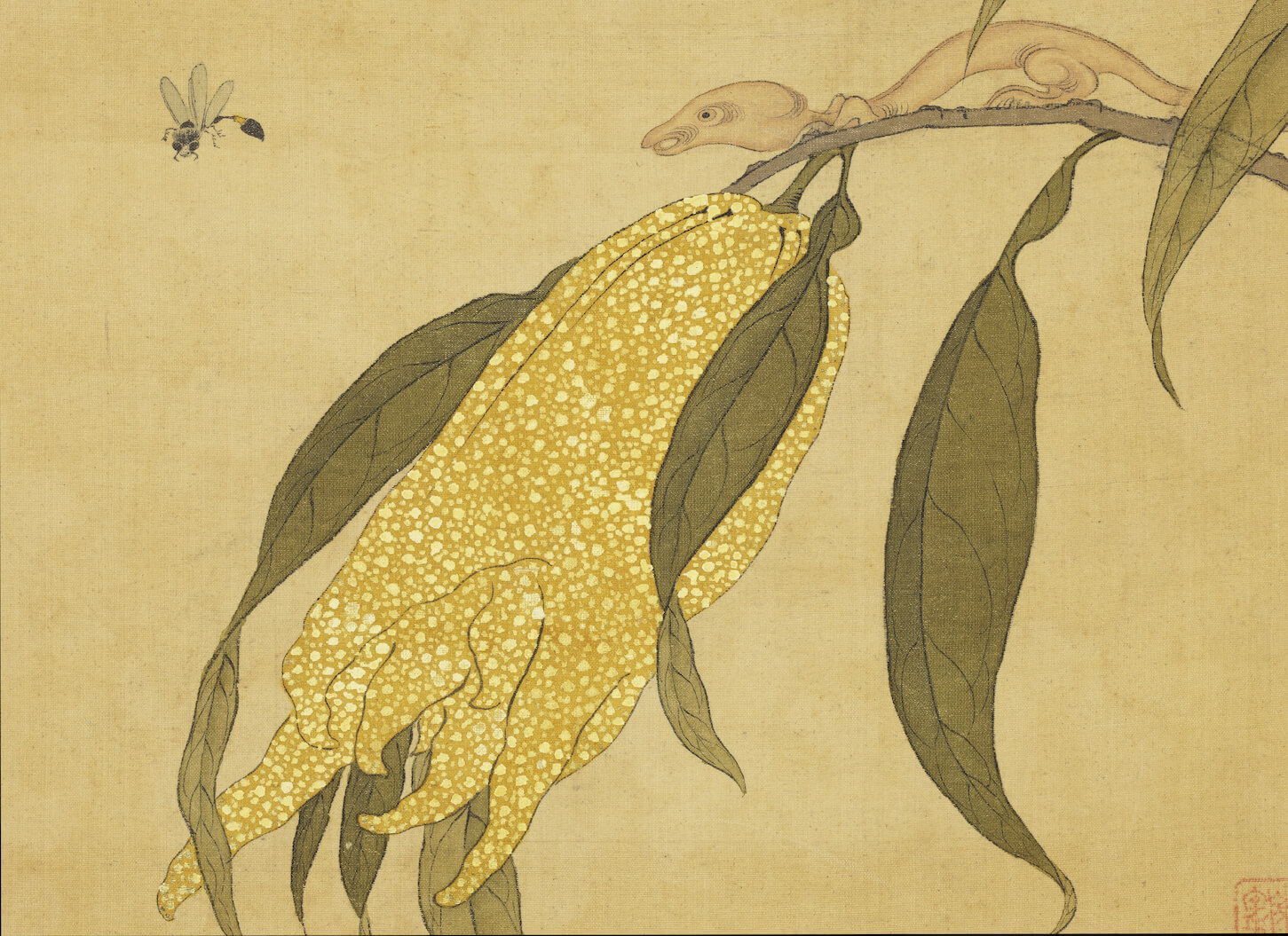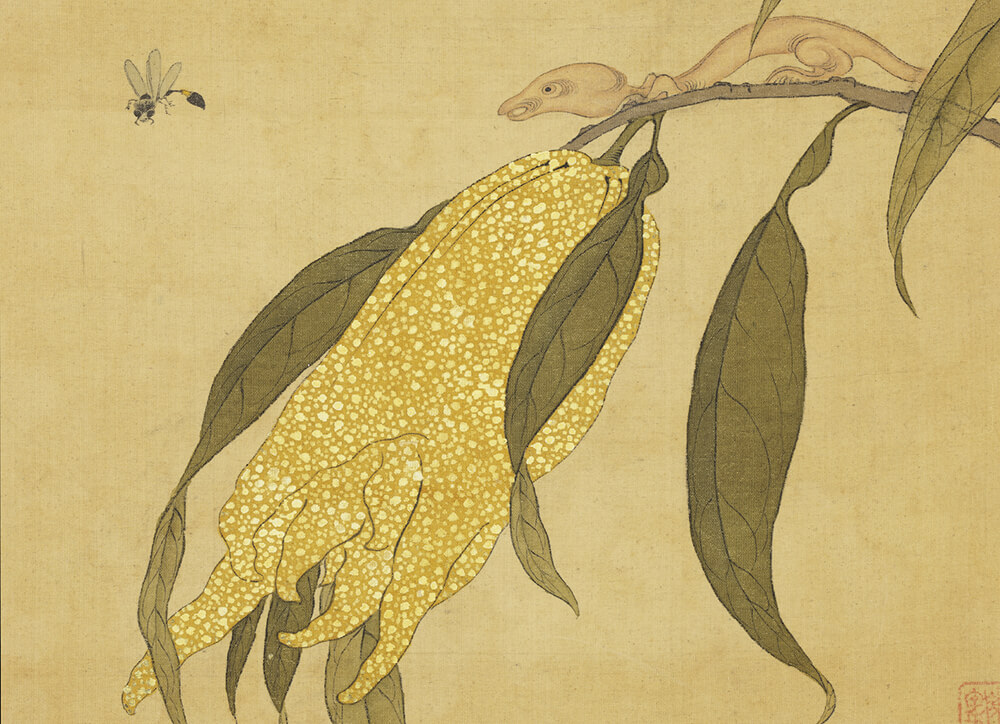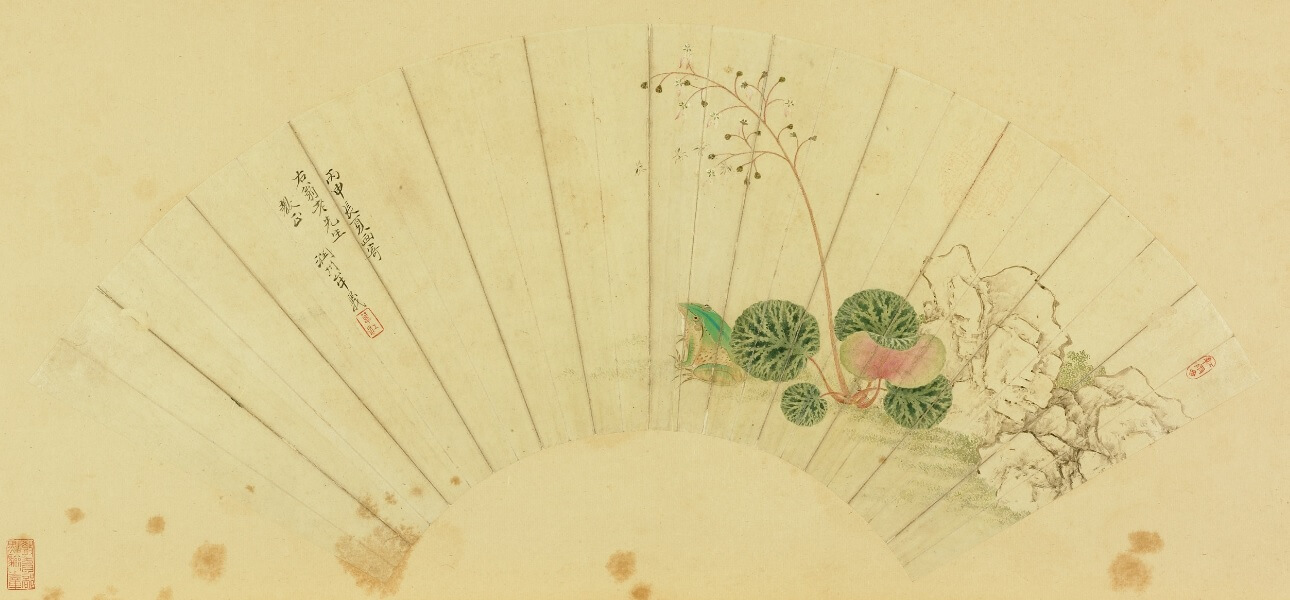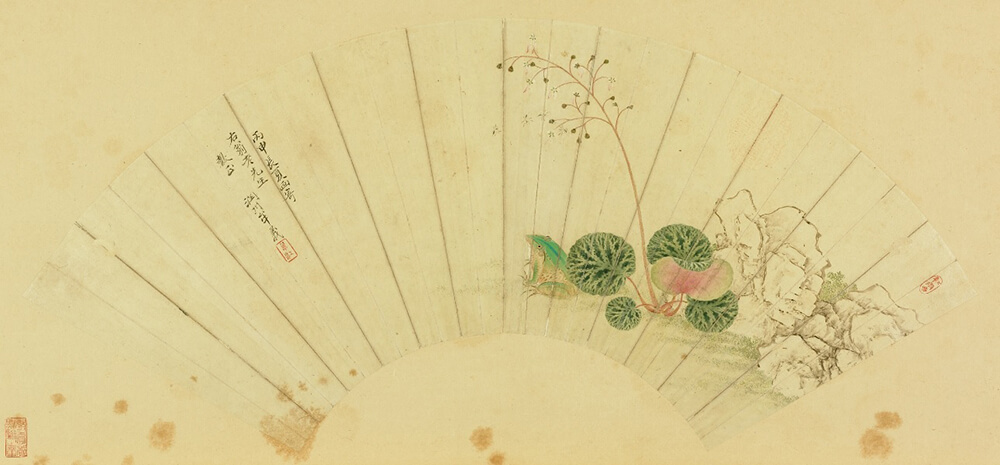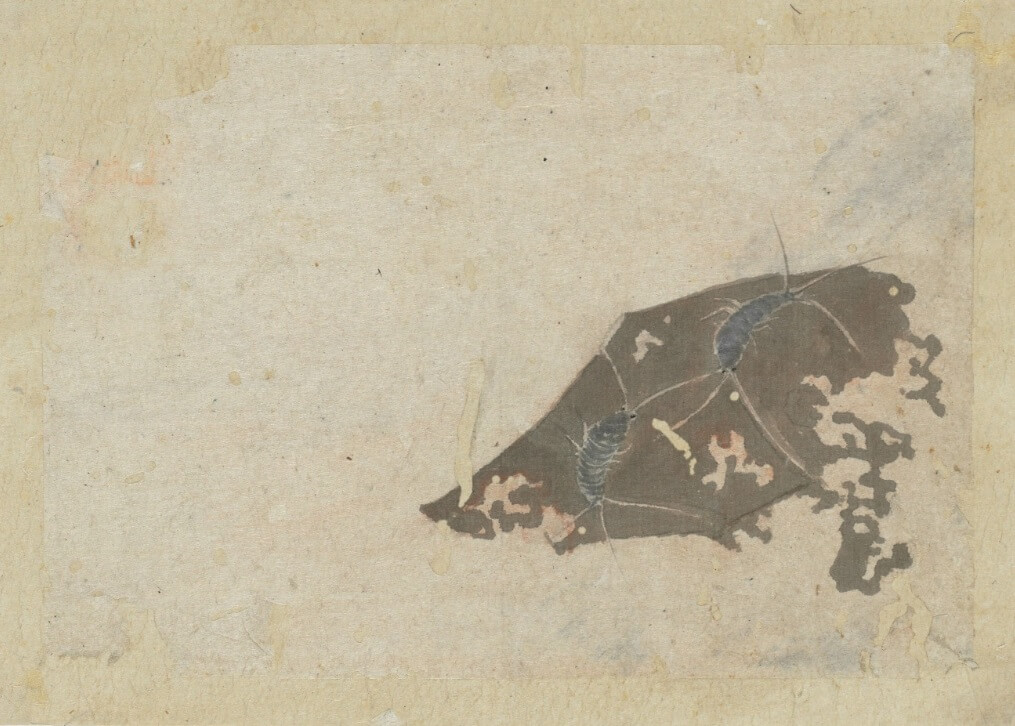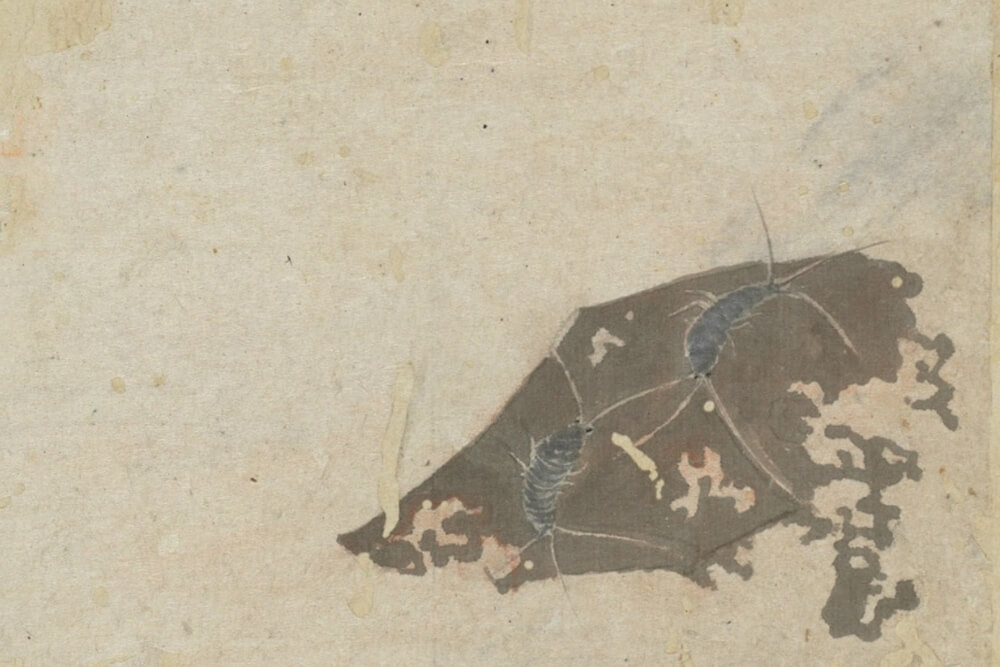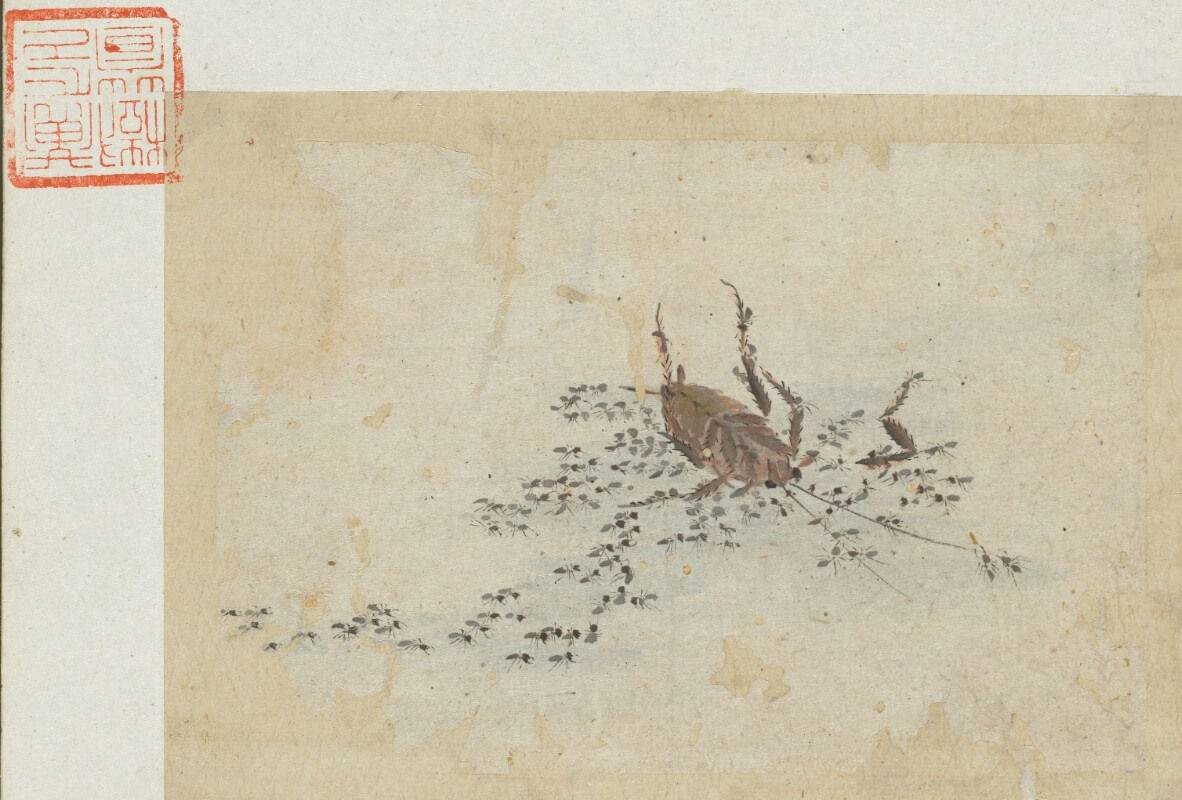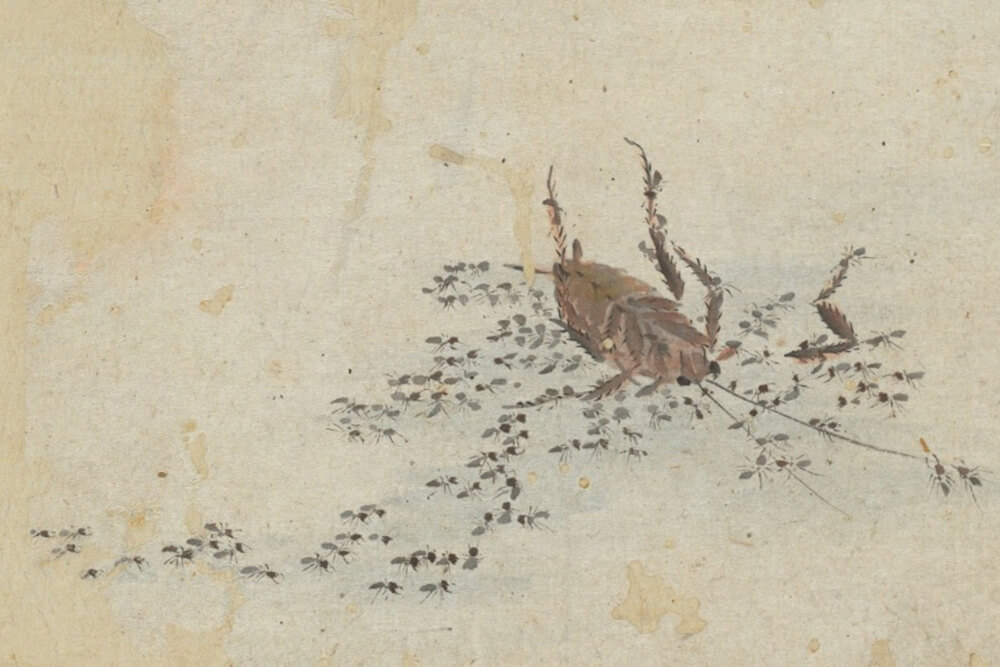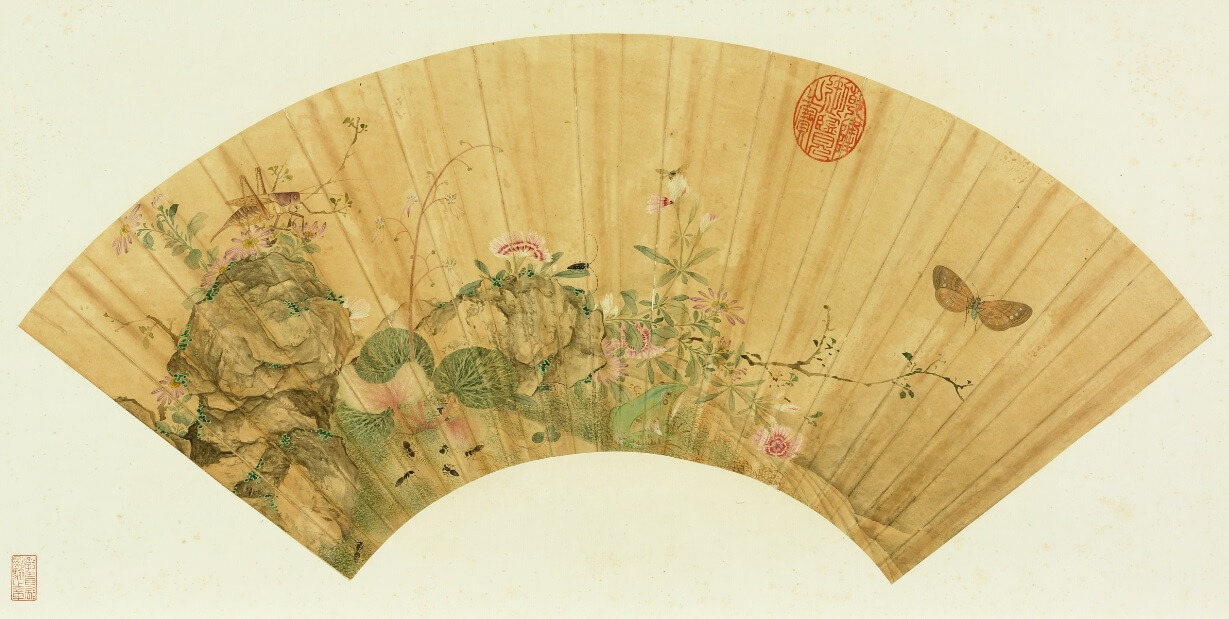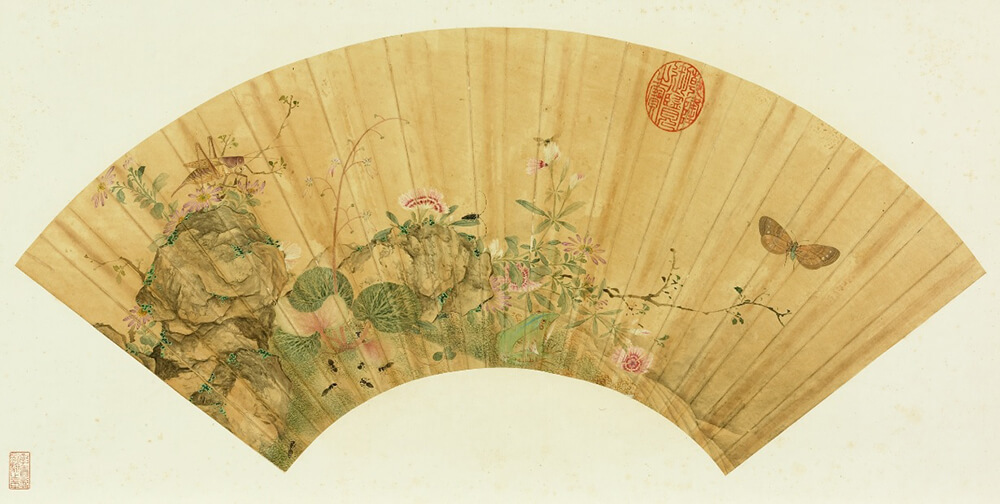'Caochong' vs. 'Insects'
The traditional opinion of 'chong (bug)' was not limited to 'Hexapoda (Insecta)' in Modern biology; it extended to spiders, earthworms, and even frogs and snails. Therefore, those who were not insects that had appeared in caochong paintings did not mean that they only played supporting roles; in fact, they were identified as 'bugs', thus no doubt that they stand as the dominant feature in the paintings. Insects and small living things that are common to see around us, any of them you can notice in the 'caochong painting'? Hurry and have a look!
Human Beings Are Also 'Chong (Bug)'? The Traditional Definition of 'Chong'
"The Classic of Rites by Dadai" from the 1st century BCE used the word 'chong' to comprehend all living creatures on earth. The division is based on the 'outer skin' and dividing 'chong' into winged chong, scaled chong, fluffy chong, hard-shelled chong and naked chong. Human beings are under the category of 'naked chong'
The meaning of chong had continued to evolve in the past; the 'Compendium of Materia Medica' from the 16th century divided the chong into three categories: egg-born, transmutation-born, and wetness-born. Among all the traditional concepts regarding 'chong', except for the fireflies and various bugs being transmutation-born; the egg-born including spiders, and the wetness-born involving toads, millipedes, and snails are past definitions that exceed our comprehension of 'insects' in present days.
- Hibiscus and Bees
- Xu Heng, Qing dynasty (1644-1911)
- From the album "Pure Views at a Forest of Art"
Xu Heng (mid-19th century) originated from Qingpu (Shanghai); Xu excelled in landscape paintings and calligraphy in official script. This fan depicts blooms of hibiscus with two bees flying among the branches. The shape of flowers is painted in exquisite portrayal while the leaves are painted in spontaneous brushes; the merge of white and green brings a sense of refreshing elegance. The placement of two bees attracted by the blooms fills the blank space. The vibrant yellow emphasizes the fluff of the bees, bringing dynamic and liveliness to the picture, and further enchanting the viewers with the imaginary scent of the hibiscus.
- Bees Nesting on an Old Tree
- Yang Jin (1644-1728), Qing dynasty
The jay is gazing upward to see the sight of 'bee division'- bees orderly circle the dried wood. The stylized image has a rustic and naive sense of wonder.
When the growing number of bees exceeds the capacity, the old queen will lead a group of working bees away from the hive to find a new location, leaving the original hive to the new-generation queen, known as the 'bee division'.
- Wasp Nest
- Hua Yan (1682-1756), Qing dynasty
- From the album "Sketches from Life, II"
Hua Yan (1682-1756) was a member of the 'eight eccentrics of Yangzhou'. They painted from extensive inspiration and developed a humorous and lively style.
This painting illustrates the nest of long-leg wasps. Autumn is the season when wasps reproduce before winter and are most aggressive in nature. The painter used close-up portrayal to capture the viciousness of wasps. The intentional sharp strokes emphasize the wings, legs and mouth parts; as a result, all wasps have ferocious and savage appearances.
- Dragonflies, Red Polygonum, and Field Aster
- Jiang Tingxi (1669-1732), Qing dynasty
The emerged plant with pink stamens is the perennial herb named red polygonum. The chrysanthemum-shaped blossoms are nectariferous plants that thrive in moist surroundings. The decorative insects are dragonflies and damselflies that often appear near water banks. The ones with separated eyes are the damselflies; the ones with close-up eyes are the dragonflies. The poem illustrates the scenery of falling rain near the water, with dragonflies flying close to the ground. When the weather is not clear, the wings of dragonflies will cumulate moist from the air and will be more challenging to fly. Hence the ancient people regarded the low-flying dragonflies as a sign of raining forecast.
- Hibiscus and Dragonflies
- Ding Yanyong (1902-1978), Republican period
This artwork was once in the collection of the Cathay Museum, and later the NPM purchased the piece in the original title. The large-eye creature flying among the green is identified by the specialist as damselfly that often found in bushes. The painter Ding Yanyong (1902-1978) originated from Guandong Province. Ding had studied in Japan in the early 20th century and was a prominent figure in the Western painting style. The painting delivers an intense personality in simplified strokes and spontaneous expression.
- Plants and Insects
- Hua Yan (1682-1756), Qing dynasty
The painted dragonfly and lizard have eyelids and pupils to make personified expressions that are slight exaggerating. The carnivorous dragonfly devouring other insects especially shows excitement and gluttony. The lizard below peaking out from the cavity and sticking the tongue out delivers a cheeky sense of cuteness. A butterfly flies on the upper left, and a snail crawls on the back of the leaf; the painting presents the diversity of various species and thriving energy.
- Bergamot
- Chen Zi (1634-1711), Qing dynasty
- From the album "Collected Brocade of the Scholar's Studio"
Chen Zi(1634-1713?) was the son of Chen Hung-shou. Chen Zi's calligraphy and painting followed his father's style. A haughty man, he never got along with others no matter where he went. He always spent all his earnings, thus, he died in poverty at about eighty around 1713. He left behind a volume entitled Xiao-lien's Poems of Travels. A lizard crouches down on a branch of a bergamot tree. He is trying to catch a bee. The bee's head, chest, stomach and wings are drawn delicately. The bee is lovely whereas the lizard is heinous. The contrast of the two creatures makes one marvel at the artist's wits. The painting is the eleventh leaf from the painter's album Collection of Masterpieces from the Studio.
- Saxifraga and Frog
- Mou Yi, Ming dynasty (1368-1644)
- From the album "Fan Paintings by Ming Artists"
Mou Yi (16th century) excelled at painting flowers, birds, and caochong in a subtle and elegant style, but with other personal information left unknown.
This painting illustrated a frog guarding under the stems of Saxifraga and staring at insects flying towards the blooms. The colour and spots on the frog blend in with the patterns of leaves; the flying insects share similarities to the Saxifraga blossoms. All painted subjects are playing a game of hide-and-seek in disguise.
- Silverfish
- Qian Xuan (ca. 1235-1307), Yuan dynasty
- From the album "Insects"
Qian Xuan (1239-1301), with the style name Shunju, was a famous calligrapher and painter in the Yuan dynasty.
Although this album was an attributed artwork, still it demonstrates admirable finesse. The 'Cockroach and Ants' depicts the process of a cockroach being mutilated and moved by ants, as an intriguing theme that is rarely seen in old pieces.
This album was a donation by military General Ji Fuxing (1909-1996), who fought against Japan, and his spouse, Dr Zhang Zhenfang.
- Cockroach and Ants
- Qian Xuan (ca. 1235-1307), Yuan dynasty
- From the album "Insects"
This painting vividly depicts the process of a cockroach being mutilated and moved by ants, showing the close observation of the painter on the interactions of creatures in the surroundings. The ink dots in different shades and simple lines form the silhouettes of ants, in contrast to the detailed portrayal of the cockroach, creating an interesting visual.
- Wildflowers and Insects
- Ming dynasty
This caochong painting on the fan in the gold-flecked paper is a treasure. Apart from the obvious butterflies and crickets, there are cute from hiding on the grass, seven ants, a bee on a petal, and longicorn beetle resting on a leaf. The cricket stepping on a small chrysanthemum on the upper left is stylized with structural features of the abdomen and tibia, showing the confidence of the painter to capture the subject and the capability to apply changes.

